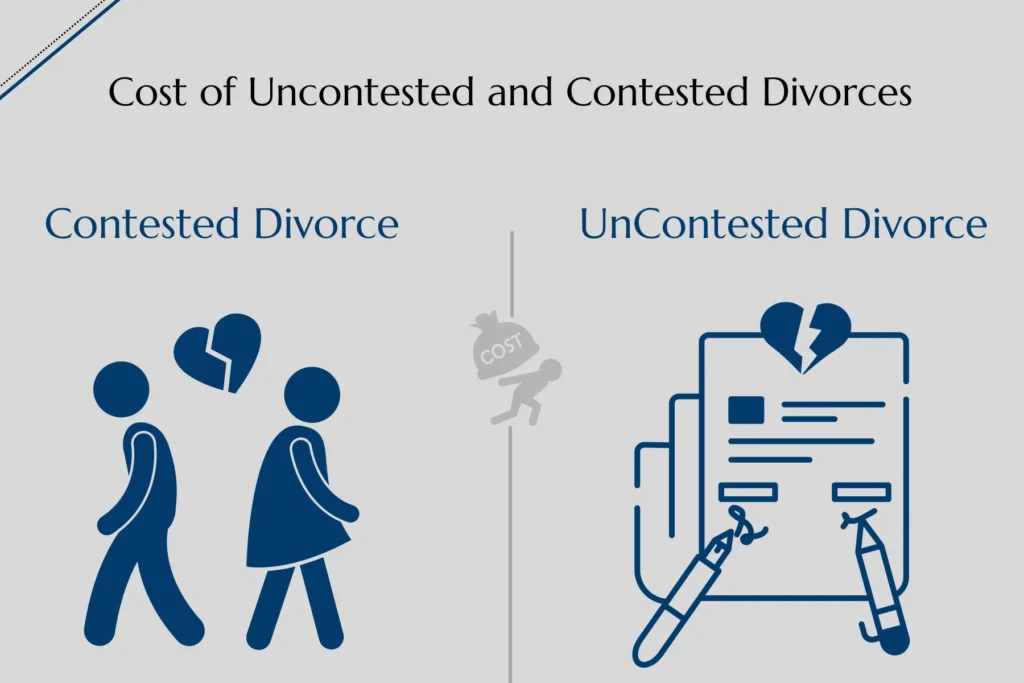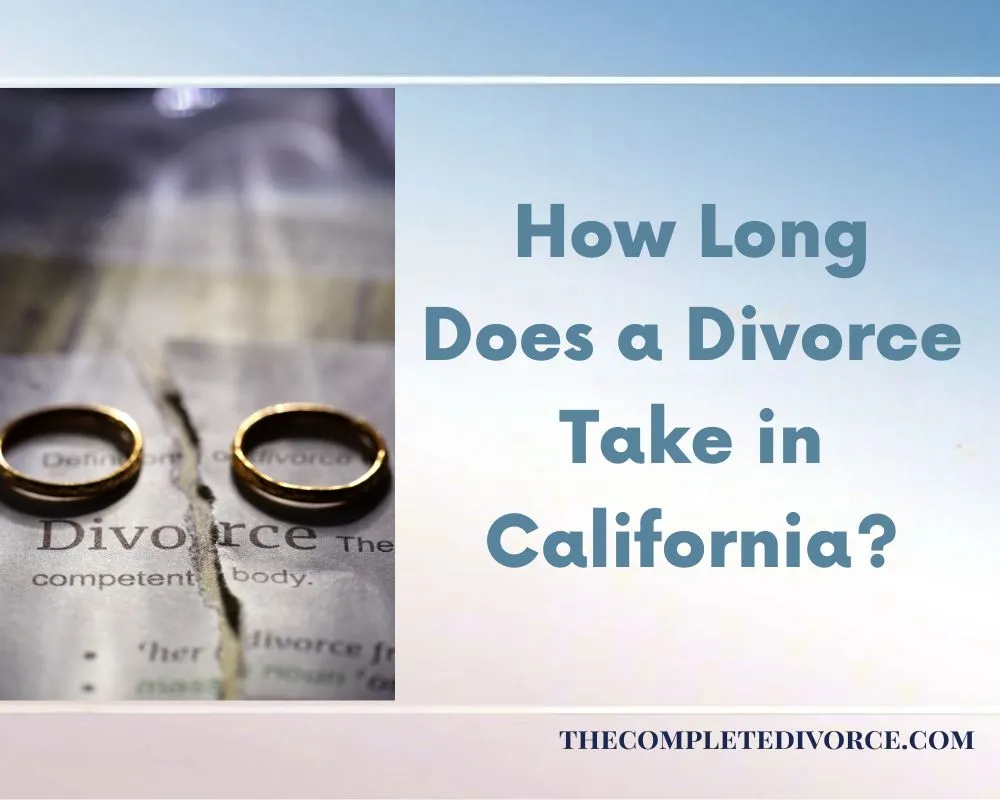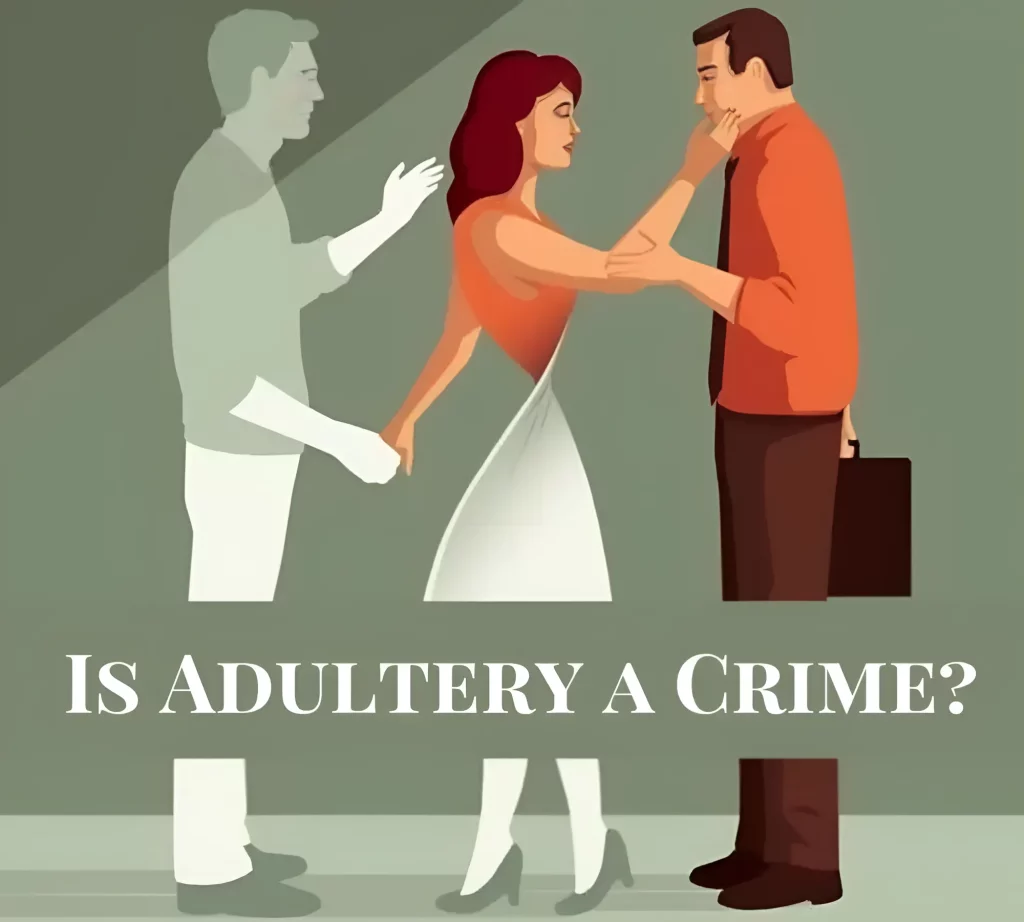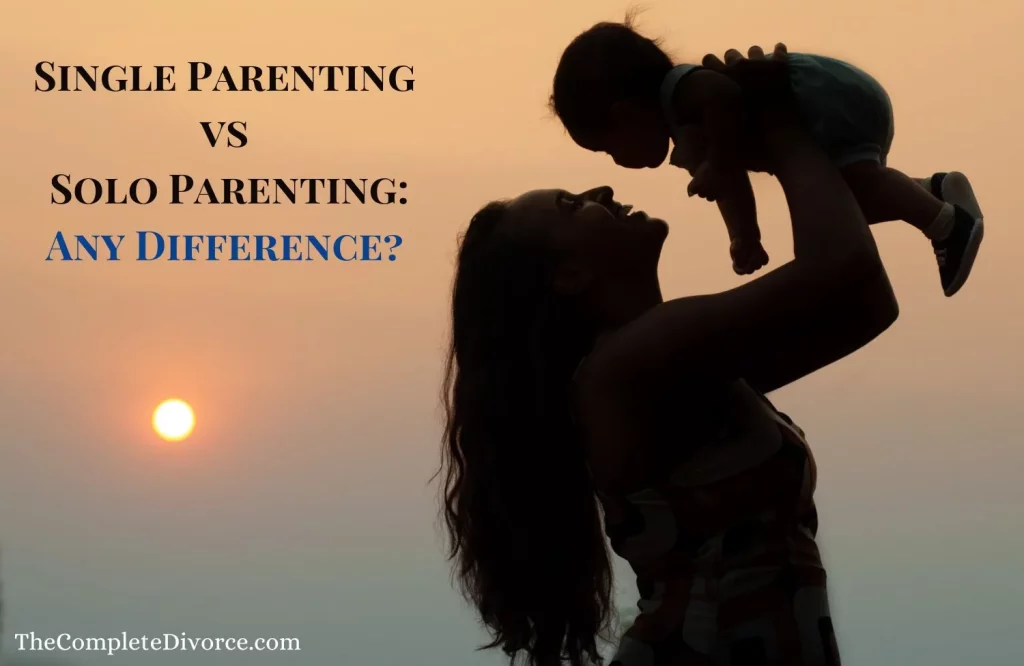
Share
7 Stages of Grief in Divorce Explained by Divorce Expert

Dina Haddad
Founder & Attorney Mediator
I’m Dina Haddad, a family law attorney-mediator in California. I’m so tired of couples not having a process that’s easy to complete their divorce. They are getting lost, wasting time and money, and beyond frustrated with their results.That’s why I created TheCompleteDivorce. I took my successful mediation practice and condensed it into an affordable and winning program.

Share
Divorce can be a life-altering event in California impacting spouses and their children emotionally and financially. There are 7 stages associated with divorce and all have striking resemblance with 5 stages of grief.
Individuals experience the stages of grief – denial, anger, bargaining, depression, and acceptance – following the loss (such as the death of a close one). The grief stages can serve as a better framework for understanding the emotional journey of individuals linked with divorce grief.
Additionally, understanding the stages in a divorce can help you make knowledgeable decisions regarding your emotional journey and the legal aspect of separation.
Dina has created The Complete Divorce, (California’s premier online divorce service) to help divorcing couples get rid of divorce related emotional and financial toll.
This blogpost explores the seven stages, which divorcing men or women may face in California.
How Long Do the Stages of Divorce Last?
Mostly, the grieving process of divorcing partners usually ends within 1.5 to 2 years.
However, the timeline or period of how long each phase of divorce lasts to an individual could vary.
There can be no one-size-fits-all answer to this question. You know that divorce is a personal and individual experience. Therefore, the coping mechanism to overcome it can be different. To overcome separation catastrophe, you can take these steps:
- Seek legal advice from Family lawyers
- Avoid isolation
- Engage in self-care
- Embrace the changes
- Get help from medical health professionals
- Seek support from family or friend
- Focus on the future and a new beginning
- Practice stress reduction
Understanding the Stages of Divorce Grief
The following are the stages of separation, which are discussed one by one.
Stage 1: Denial
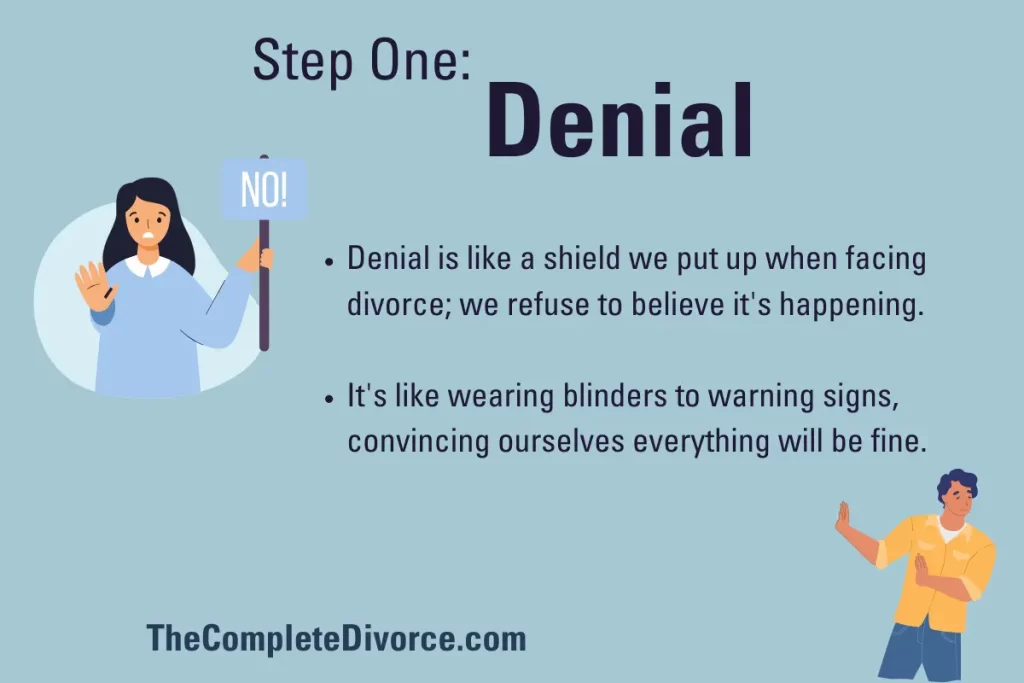
Denial is a protective sheet individuals put up when they first learn about divorce. In this stage, they deny and refuse many things like:
- Warning signs of separation.
- Thinking that the other spouse is going through personal turmoil and/or
- The situation will be fine soon.
The individuals at the first stage of divorce feel totally bewildered. Their mind struggles to accept the reality of it when the denial takes hold. For a successful divorce, you need to practice self care, set right expectations, and have a plan.
In the denial phase, the people may experience these symptoms:
- Shock
- Numbness
- Confusion
- Avoidance
- (Emotional) Shut Down
You start the marriage with a commitment of mutual love and respect, but it can be painful as you learn about separation. Denial is the natural response because you find it hard to accept the relationship is coming to an end.
Individuals get into frustration and isolation when they refuse to collaborate on any future plan due to intense feelings and emotions. Thus, their relationship with your spouse worsens.
Stage 2: Fear
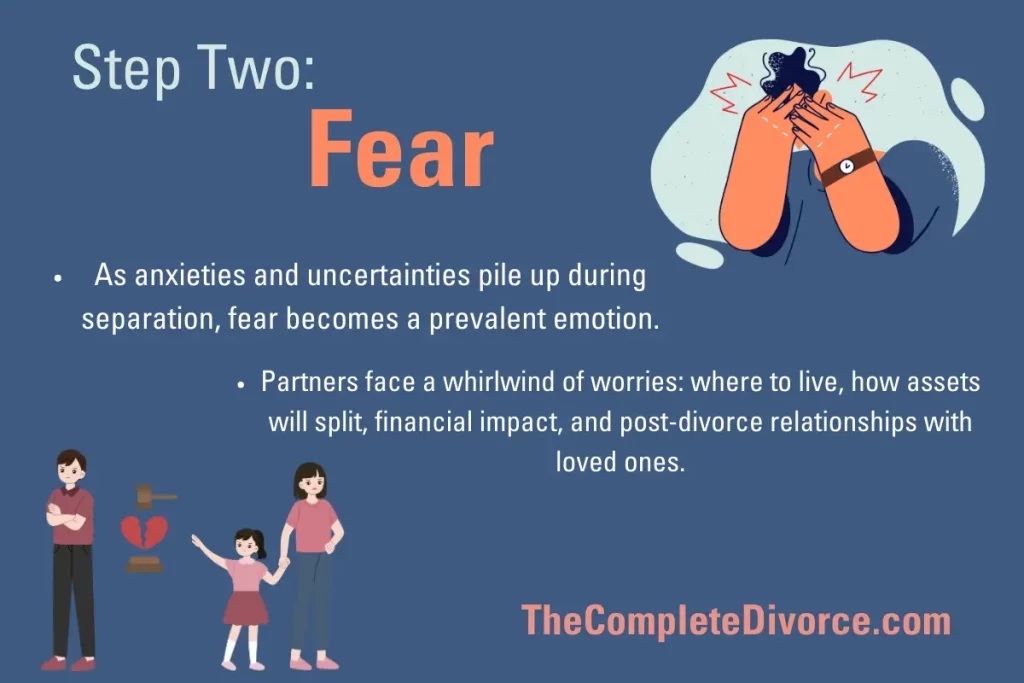
Individuals dealing with a lot of anxieties and uncertainties in the separation process may develop an emotion called fear. In the second stage, the divorcing partners may manifest intense fears and worries related to changes that will happen.
Questions like these may come into their minds: where will I live, and how will the assets be divided? What shall be the financial impact of divorce? How will friends and family treat me after divorce? The separating spouses, as a result, could develop these fears:
- Fear of unknown
- Fear of financial insecurity
- Parental concerns phobia
- Terror of emotional isolation
- Fear of loss of identity
Fear is the natural part of this journey, but Identifying and curing it is crucial. If you are dealing with fear due to the separation process, you can seek support from your family and friends.
Likewise, you can treat fear by seeking divorce (recovery) therapy through mental health professionals, psychiatrists, and support groups. They can really provide insightful ideas and practicable actions as coping mechanisms to address the fear ballooning due to the divorce.
Stage 3: Anger
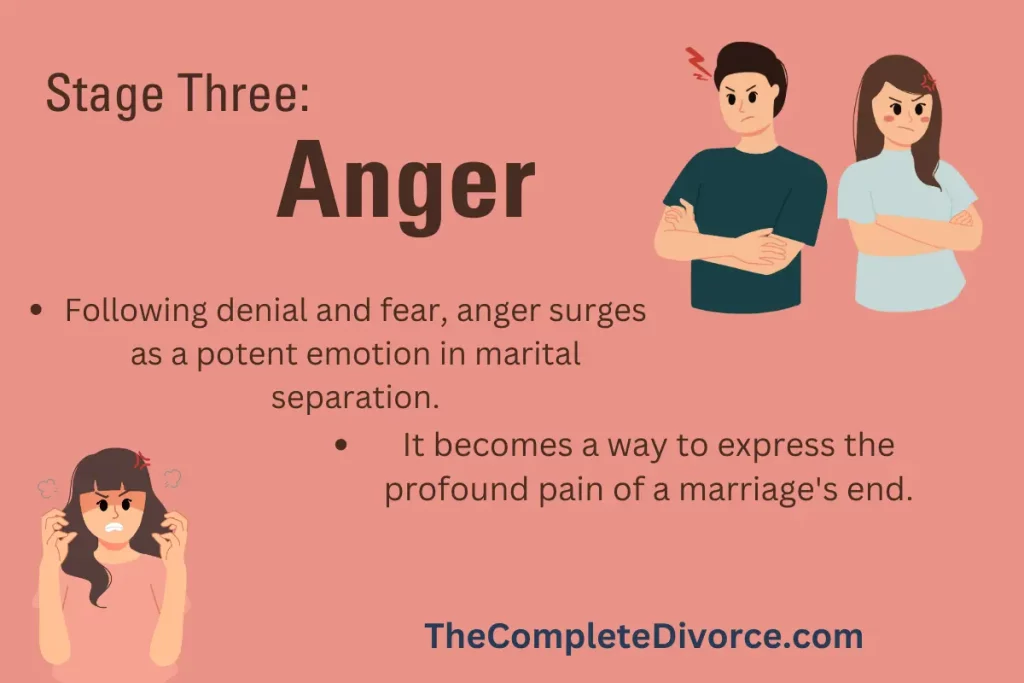
After the denial and fear, the anger rises as a strong emotion during the marital separation. Feelings of betrayal, loss, shame, and isolation can be the product of divorce.
All these feelings could mix up to bring the anger forward in both the spouses to express the pain associated with the end of a wedding.
Many individuals become angry at how things are occurring. While others who failed to stop the dissolution of marriage also agitate. It’s very common for spouses to experience anger when undergoing a divorce. Because if they express anger insanely, it can prove dangerous to the case, and if they suppress anger for a long time, it can also be lethal. Both situations appear, thus, could be imagined like a double-edged sword.
Anger during the breakup phase can be towards an ex-partner, family members, oneself, or the situation. Just put the calm in this stage because any anger or violent behavior of yours can create legal problems pertinent to divorce issues like child custody and support.
Stage 4: Bargaining
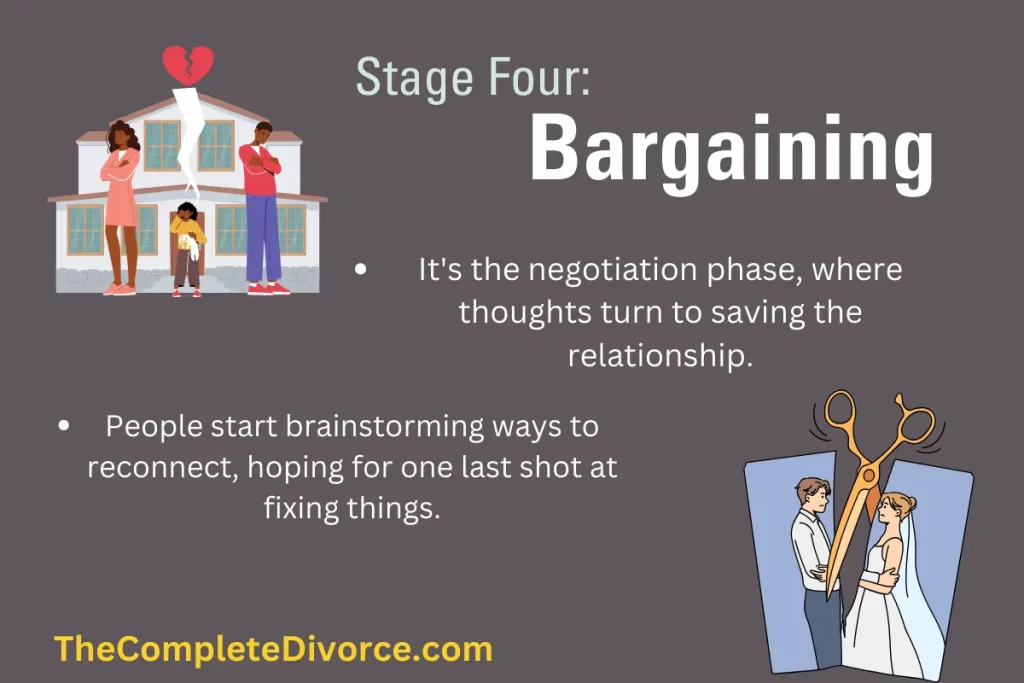
At number four, spouses go through the bargaining or negotiation phase. In this phase, a person may think about ways to save the relationship. During the negotiation phase, individuals can negotiate terms considering the last chance and hope to reconnect with the partner and fix the broken relations.
Usually, they question themselves by overthinking the situations. They could approach their spouse or ask the partner to save the marriage. This way, they could get rid of blame, fear, anxiety, and shame like issues.
Following are the (what-if) questions that can pop up into their mind.
- What if I change my approach?
- What if I never cheat again on my spouse?
- What if I had tried harder to save the relationship?
- How can I make the situation better and in my favor?
While bargaining, many individuals also meet rejections when they summon the courage to heal their relationships. These situations can often lead to isolation and intense feelings.
Therefore, it is highly mandatory to approach this stage with realism and acceptance. And it will help you know that you cannot control everything, helping you heal from the divorce grief.
While the support from friends and family during this phase can be a breakthrough. They may advise you on some important problems concerning separation. For instance, what are your interests, and how will equitable divorce be helpful to you?
Stage 5: Depression
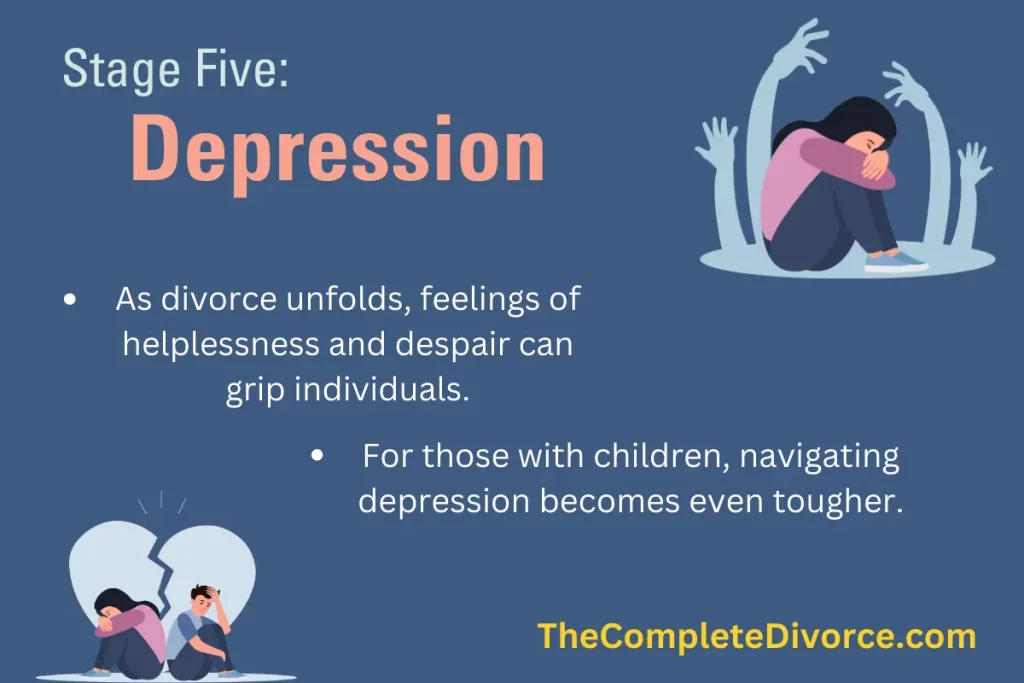
In the depression stage, individuals during divorce may feel helpless. You may have shared great experiences, time, and years with your spouse.
But, when you realize that no way is left to save the relationship with your spouse and your tomorrow will be different than what you have planned, you may encounter depression or you may feel sadness, emptiness, and numbness.
Furthermore, depression can also lead to a loss of interest or pleasure in the activities that you used to enjoy once as partners.
Depression in the event of marriage dissolution is normal and heals with time. But you cannot ignore your emotional and physical well-being. Therefore, you can take temporary medications to cope with depression. Or, you can reach out for support from trusted friends and family members to deal with the depression.
However, for unending and extreme levels of depression, consulting with a mental health clinician or therapist is crucial. Following are the common signs of gloomy depression
- Hopelessness
- Negative self-beliefs and thoughts
- Loss of interest in social activities
- Change in sleep and appetite patterns
- Increased dependence on alcohol and drugs
Stage 6: Acceptance
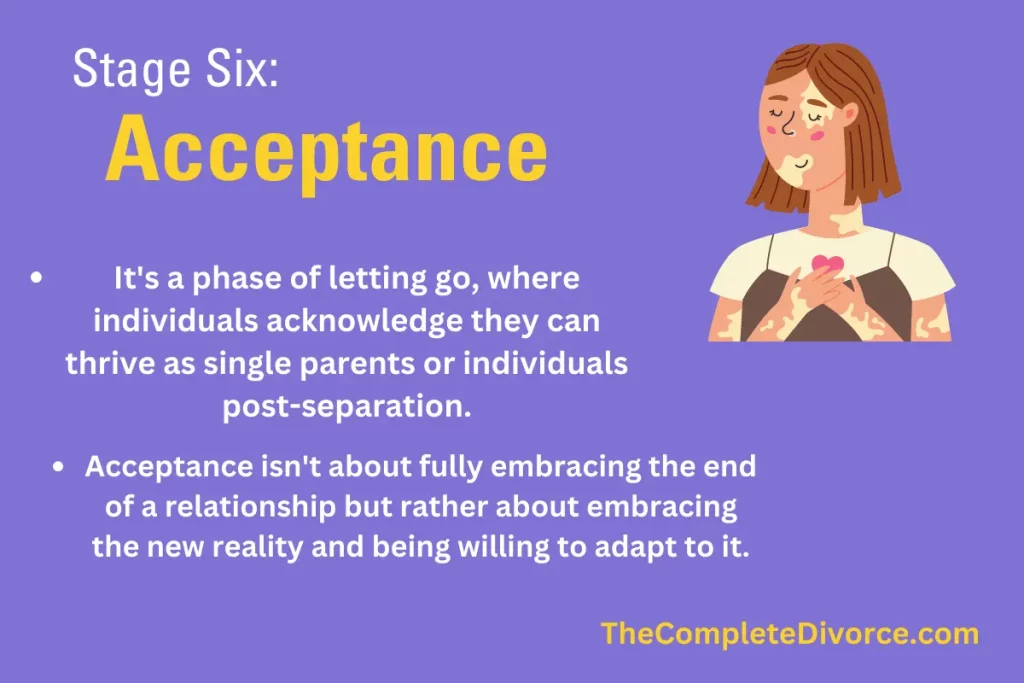
The acceptance stage restores the individuals who have gone through the denial, fear, anger, bargaining, and depression stage.
In this letting go stage, the separating partner accepts that he or she can live as a single parent or person in the event of separation.
In short, separating couples start accepting and adapting to the end of their relationship slowly. They feel a bit relaxed. They can use this time to set new hobbies, read a book or see some old friends and movies to attain a sense of pleasure and empowerment.
The signs of acceptance are as under:
- Self compassion
- Adaptability
- Mindfulness
- Letting go of resentment
Stage 7: Rebuilding and Moving On
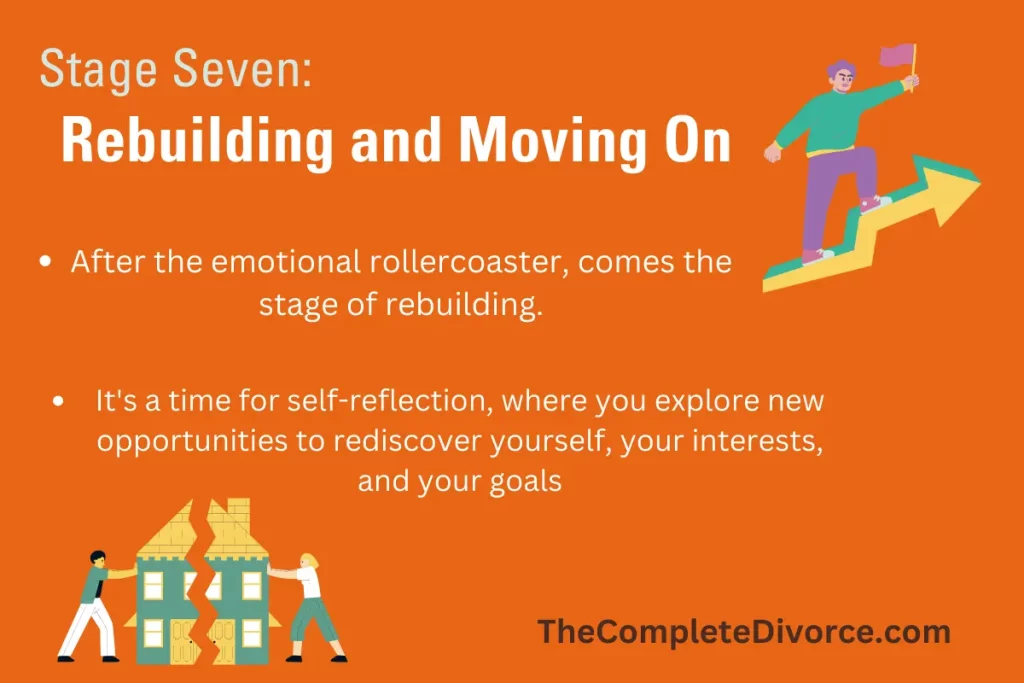
The 7th stage of an emotional divorce process is rebuilding and moving on. Rebuilding is the self-reflection stage, allowing spouses to start looking for new opportunities and rediscover their identity, interests, and goals.
However, this stage does not imply that separating couples have completely got rid of all emotional scars given by divorce grief. But it means that they start building some new relationships and try to find happiness independently.
These traits are often seen in the people at this stage:
- Renewing identity
- Cultivating self-care
- Building new relations
- Gaining independence
- Learning from the past emotional experience
Summing Up – We know how harder divorce can be.
Divorce can be a challenging, mental and emotional rollercoaster ride. The divorcing couples may go through 7 stages of divorce.
But understanding the phases can help us prepare better, manage explosive emotions, and take care of your physical and emotional health.
According to Dina Haddad, “It does not matter if you’re going to divorce in California but what matters is how you divorce.”
Recovering from the stages can vary from person to person. The Complete Divorce, is designed to make divorce process easier, simpler, and cheaper; spouses can solve their matters out of the court. Plus, they don’t have to pay expensive lawyers.
More than 500 people have already chosen Dina’s online divorce service to prefer divorce from the comfort of their home. This not only made their divorce easier, but also helped them cope with the stages of divorce effectively.
So, the take home message is: take care of yourself, lean on professional support (by a therapist or spiritual healer), and opt for the best way to divorce.
Related: How soon can you remarry after divorce in California?
FREQUENTLY ASKED QUESTIONS
What Are the Different Phases of Divorce?
There are a total 7 phases of divorce, and they are:
- Denial
- Fear
- Anger
- Bargaining
- Depression
- Acceptance
- Rebuilding and Moving on
Where Should I Seek Support during Divorce?
You can consider the following options to maintain your emotional and physical well-being during the 5 stages of separation.
- Family
- Close friends
- Spiritual Counselors
- Mediation Coaches
- Psychotherapeutic Professionals
- Relationship/Marriage Support Groups (Divorce Club or Local Online Support Group)

